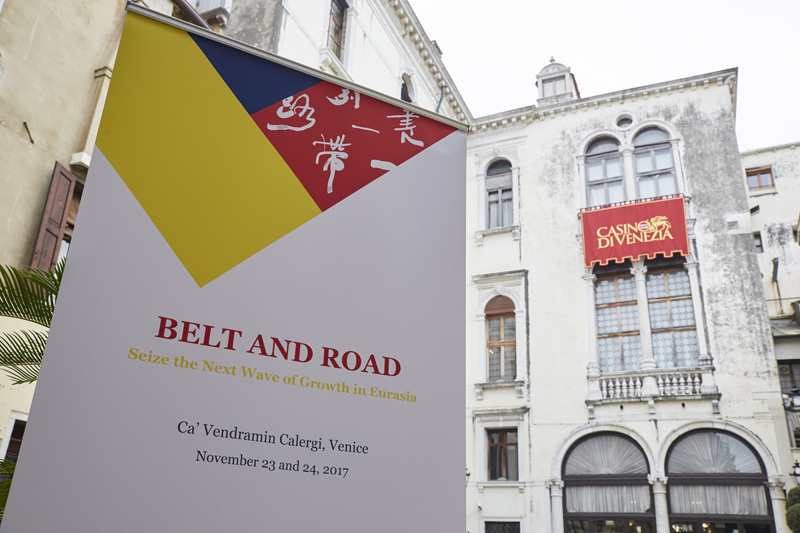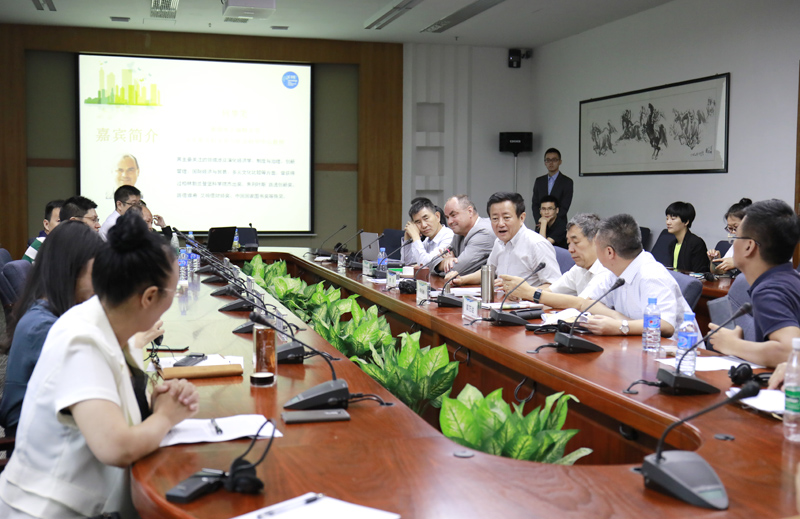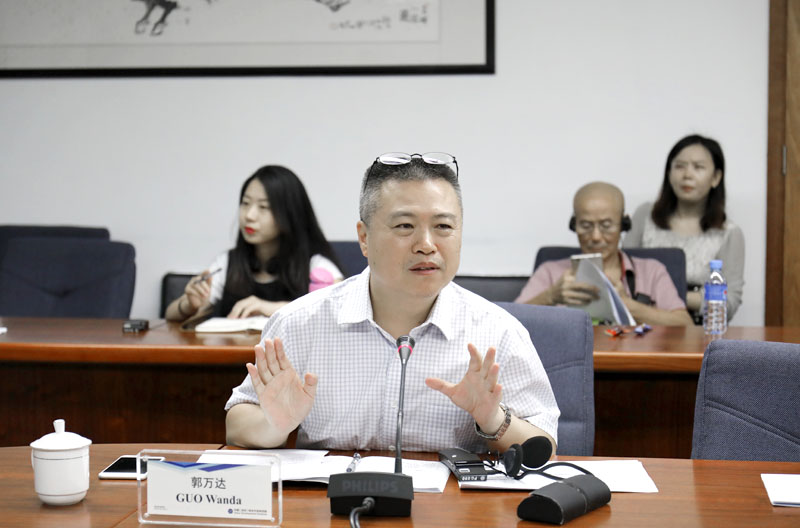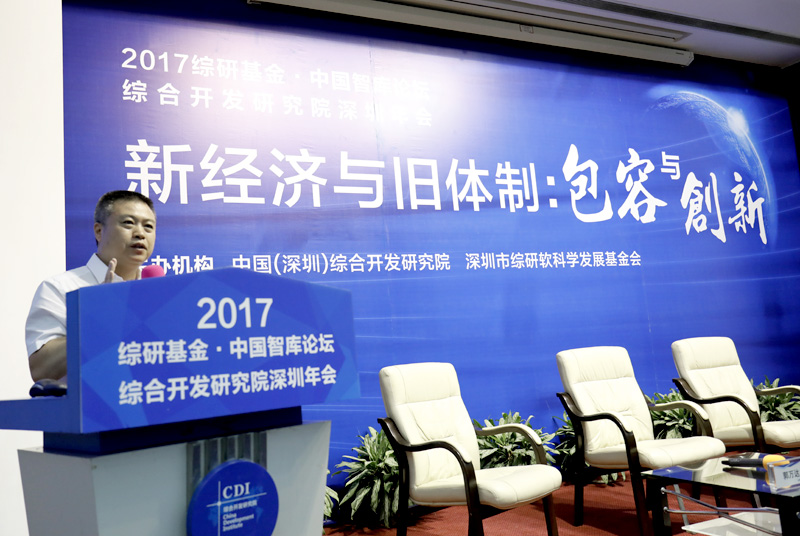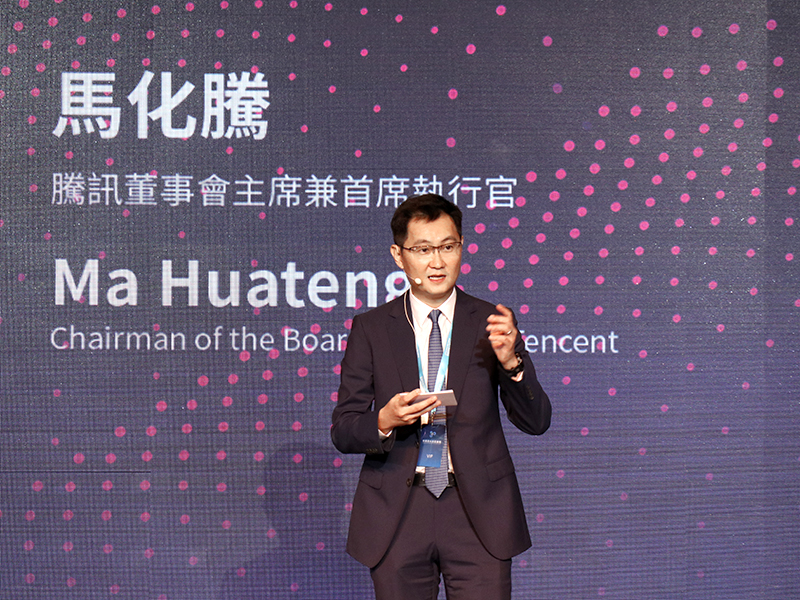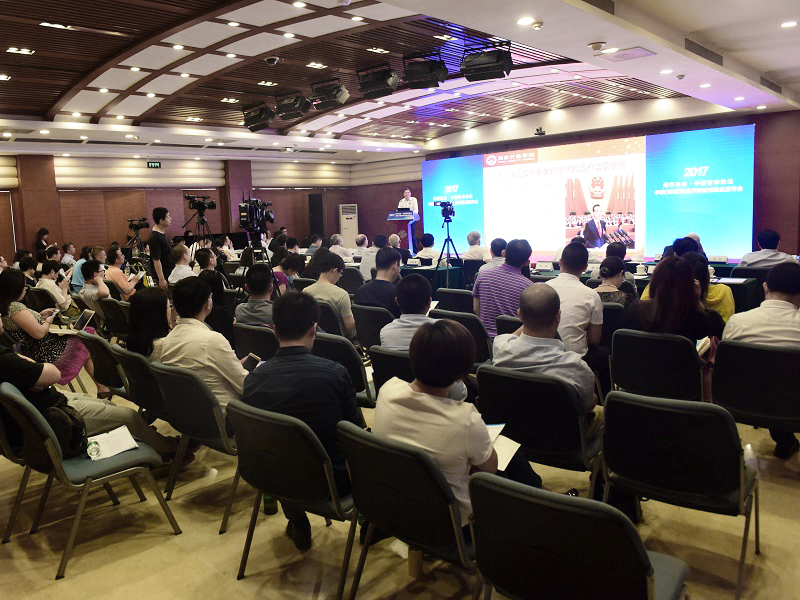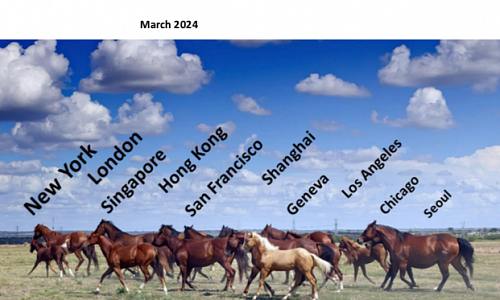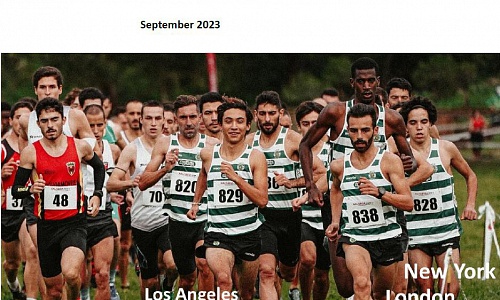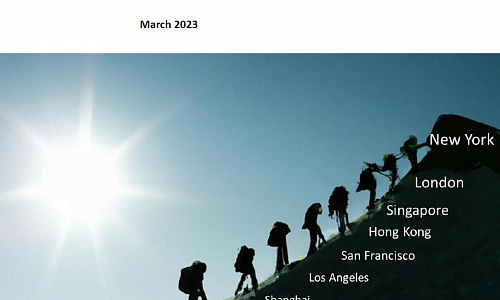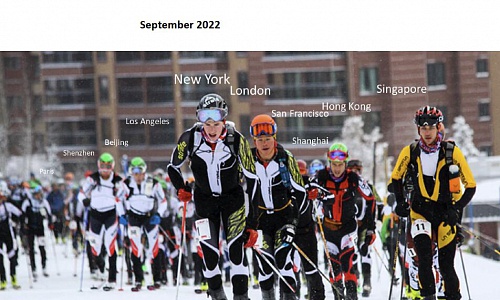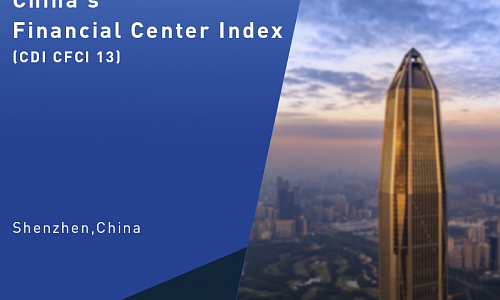
2017 - Events
Information

Date: December 7, 2017
Venue: Pengcheng Hall, Qilin Villa, Shenzhen
Host: CDI, Central Policy Unit of HKSAR
Theme: Shenzhen-Hong Kong Cooperation to Drive the Guangdong-Hong Kong-Macao Greater Bay Area
Program
10:00-10:30 Registration
10:30-10:50 Opening Remarks
- Su Zhiliang, Chief Researcher, Central Policy Unit of HKSAR
- Guo Wanda, Executive Vice President, CDI
10:50-11:00 10th Anniversary Ceremony of Shenzhen-Hong Kong Forum
11:00-12:20 Keynote Speeches: Shenzhen-Hong Kong Cooperation to Drive the Guangdong-Hong Kong-Macao Greater Bay Area
Moderator: Guo Wanda, Executive Vice President, CDI
Panelists:
- Tang Jie, Former Mayor of Shenzhen Municipality, Professor of Harbin Institute of Technology, Shenzhen
- Wang Guiguo, President, International Academy of the Belt and Road
- Liu Zhongpu, Full-time Member, the Consultation Commission for the Shenzhen Municipal CPC Committee
- Ka-Mun Chang, Managing Director, Fung Business Intelligence
Discussion
12:20-13:30 Lunch
13:30-14:45 Session One: Joint Development of the Lok Ma Chau Loop
Moderator:
Tan Gang, Vice President, Shenzhen Party School
Panelists:
- Liu Zhiyong, Deputy Head, People’s Government of Futian District, Shenzhen
- M Y Wong, Chairman, Board of Directors, Hong Kong Applied Science and Technology Research Institute Company Limited
Free discussion
14:45-15:00 Tea Break
15:00-16:15 Session Two: Innovation of Cooperation Mechanisms
Moderator:
Winnie Tang, Founder & Honorary President, Smart City Consortium
Panelists:
- Xie Guoliang, Economic and Policy Research Director, Bank of China (Hong Kong) Limited
- Wang Yanmei, President, Shenzhen Nanshan Science and Technology Office
Discussion
16:15-16:30 Conclusion
- Guo Wanda, Executive Vice President, CDI
- Su Zhiliang, Chief Researcher, Central Policy Unit of HKSAR
Highlights
Shenzhen and Hong Kong take a lead in the development among the city cluster of the Guangdong-Hong Kong-Macao Greater Bay Area and set an example for cross-border cooperation. The innovation of Shenzhen-Hong Kong cooperation is an important approach for Shenzhen and Hong Kong to enhance their overall competitiveness and achieve the coordinated development.
Shenzhen-Hong Kong Cooperation to Drive the Guangdong-Hong Kong-Macao Greater Bay Area
In order to play their roles of the “Innovation Hub” in the Guangdong-Hong Kong-Macao Greater Bay Area, Shenzhen and Hong Kong should seek for mutually-beneficial cooperation in a deeper and more open way. Amid Guangdong’s new round of opening up during the construction of the Guangdong-Hong Kong-Macao Greater Bay Area, Shenzhen-Hong Kong Metropolis will give play to its core role to open up externally and make a difference domestically. Shenzhen-Hong Kong and their surrounding cities and regions can develop in a collaborative and innovative way to achieve the effect of shared development. Leveraging on the international advantages of Hong Kong, the cooperation level of the Greater Bay Area will be enhanced. As an international finance, shipment and trade center, Hong Kong can take a lead in opening up within the Greater Bay Area. The key point of the cooperation within the Greater Bay Area lies in the Shenzhen-Hong Kong cooperation and a series of new platforms will be set up between the two cities, which will become the new economic development engine of the Greater Bay Area.
Joint Development of the Lok Ma Chau Loop
Shenzhen-Hong Kong Technology Innovation Cooperation Zone is an important practice to promote the construction of the “Shenzhen-Hong Kong Innovation Circle” with international competitiveness. Leveraging on their respective unique advantages, Shenzhen and Hong Kong will develop and improve the technology and innovation industrial chain, promote the exchange of innovative elements and enhance their collaborative competitiveness within the Loop as a new cooperation platform. As the “best test field” of the Shenzhen-Hong Kong cooperation, the Loop may attract a new batch of international talents and enterprises to settle in, which will facilitate China’s technology and innovation to reach international level and gain advanced development experience. In the joint promotion of the development of the Loop, Shenzhen and Hong Kong should put more efforts on solving problems about the free flow of four elements, including personnel, goods, information and capitals.
Innovation of Cooperation Mechanisms
In order to achieve the integrated development, it is urgent for the Guangdong-Hong Kong-Macao Greater Bay Area to conquer the institutional obstacle and explore innovation in the cooperation mechanism. Due to cross-border checkpoint, One Country and Two Systems and economic and cultural gaps, it is imperative to establish the cooperation mechanism based on the principle of achieving shared growth. In view of this, the Shenzhen and Hong Kong governments can provide the system and mechanism required for the coordinated development and necessary policies conducive to industrial cooperation between the two cities. Meanwhile, it is proposed that the public service platform for industrial innovation should be set up within the Guangdong-Hong Kong-Macao Greater Bay Area to deal with various issues, such as intellectual properties, legal assistance and technology transfer. Professional qualification certifications and business dispute resolutions should be established to pragmatically promote the cooperation mechanism between the two cities.
Gallery
https://en.cdi.org.cn/component/k2/itemlist/category/76-2017-events#sigProId73b27b909c
Information
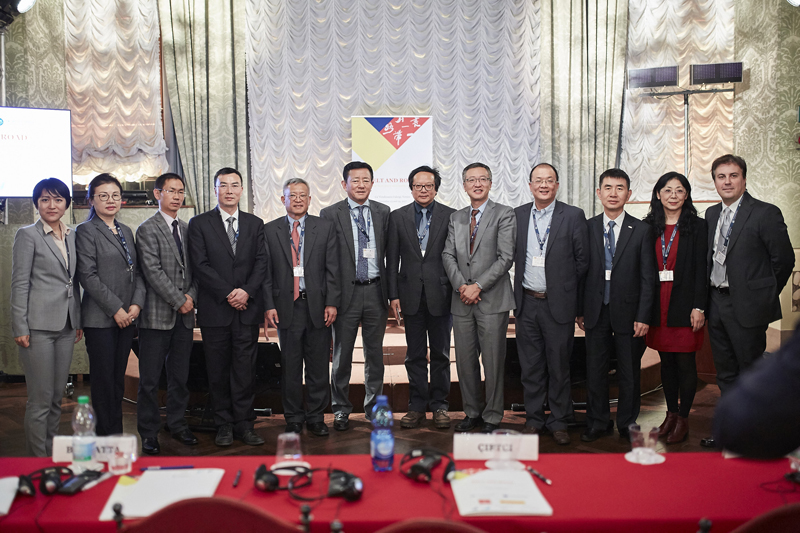
The forum is focused on mutually beneficial strategies and investment opportunities sparked by the Belt and Road Initiative that will catalyze development and new industrial activities all over Eurasia (China, Central Asia, Middle East, Europe).
Date: November 23-24, 2017
Venue: Ca’Vendramin Calergi, Venice
Organizer: China Development Institute, The European House – Ambrosetti
Theme: Belt and Road: Seize the Next Wave of Growth in Eurasia
Program
Thursday, November 23
14:00 – 15:00 Opening Remarks
- Paolo Borzatta (Senior Partner, The European House – Ambrosetti)
- FAN Gang (President, China Development Institute)
- LI Ruiyu (Ambassador of the People’s Republic of China to Italy)
- Riccardo NENCINI (Deputy Minister of Infrastructure and Transport, Italy)
- Fatih CIFTCI (Deputy Minister of Custom and Trade, Republic of Turkey)
15:00 – 16:30 The Geo-economics of the Belt and Road
Moderator:
- Paolo COSTA (Chairman, Spea Engineering; Former Minister of Public Works, Italy; Former Mayor of Venice)
Panelists:
- Giovanni ANDORNINO (Vice President, Torino World Affairs Institute)
- Giorgio BRUNO (Executive Vice President Corporate and Chief Corporate Development, Pirelli)
- FANG Ke (Director, Investment Operations, The Asian Infrastructure Investment Bank)
- Paolo MAGRI (Executive Vice President and Director, ISPI)
- ZHANG Wei (Deputy President, Chinese Academy of International Trade and Economic Cooperation, Ministry of Commerce, P.R. China)
Q&A
16:30 – 17:00 Coffee Break
17:00 – 18:30 Financing the Belt and Road
Moderator:
- FAN Gang (President, China Development Institute)
Panelists:
- FENG Chunping (General Manager of Strategic Planning Department, The Export-Import Bank of China)
- Beniamino QUINTIERI (Chairman, SACE)
- WANG Jianye (Managing Director, Silk Road Fund & Professor of Economics and Director of the Volatility Institute at NYU Shanghai)
Q&A
Friday, November 24
09:00 – 10:45 Infrastructural Revolution in Eurasia
Moderator:
- Massimo DE DONATO (Radio and TV Author; Editor in Chief, Tir Magazine)
Panelists:
- Antonio Enrico BARTOLI (Ambassador of Italy to Georgia)
- Ketevan BOCHORISHVILI (CEO, JSC Anaklia City, Georgia)
- LI Lanfang (Founder and Chairwoman, Whale Offshore Engineering Group)
- LI Quanyong (Chief Economist, Tianjin Port Group)
- Riccardo Maria MONTI (Chairman, Italferr)
- Pino MUSOLINO (Chairman, Venice Port Authority)
Q&A
10:45 – 11:15 Coffee Break
11:15 – 12:45 Air Transport and Logistics
Moderator:
- Massimo DE DONATO (Radio and TV Author; Editor in Chief, Tir Magazine)
Panelists:
- Giulio DE METRIO (COO, SEA Group – Milan Airports)
- Enrico MARCHI (CEO, SAVE Group – Venice and Treviso Airports)
- MIAO Weisheng (President, Hainan Airlines Institute of Economics)
- ZHOU Shunbo (Executive Director, Department of New Economy Research, China Development Institute)
Q&A
12:45 – 14:30 Luncheon
14:30 – 16:30 Innovative Business Strategies along the Silk Roads
Moderator:
- Paolo BORZATTA (Senior Partner, The European House – Ambrosetti)
Panelists:
- Mammad AHMADZADA (Ambassador of Azerbaijan to Italy)
- Piergiorgio BORGOGELLI (CEO and Managing Director, Italian Trade Agency)
- Francesco DE BETTIN (Founder & CEO, DBA Group)
- Murat Salim ESENLI (Ambassador of Turkey to Italy)
- QIN Gang (Head of Strategy Planning and Business Development, China International Marine Containers (Group) Ltd)
- ZHENG Zhibin (General Manager of Global Smart City Business Department and Chief Smart City Consultant, Huawei)
Q&A
16:30 – 16:45 Closing Remarks
- XU Lin (Director General, China Center for Urban Development, National Development and Reform Commission of China)
- Paolo BORZATTA (Senior Partner, The European House – Ambrosetti)
Highlights
Here are some excerpts from the Belt and Road: Seize the Next Wave of Growth in Eurasia.
“We wish to seized this historic opportunity, strengthen communication between China and Italy.”
In the 19th CPC National Congress, China made the commitment of pushing forward international cooperation under Belt and Road Initiative, following the principle of achieving shared growth through discussion and collaboration. We wish to seized this historic opportunity, strengthen communication between China and Italy, as well as collaboration in all areas, including infrastructure, with goal to benefit both countries’ people.
LI Ruiyu, Ambassador of the People’s Republic of China to Italy
“Even though China is poor in terms of income (i.e. GDP per capita), but China is rich in terms of wealth.”
China accumulated huge savings from the past 20 years. The economic rational of OBOR Initiative is that we should invest our national savings in concrete projects which can help others develop.
FAN Gang, President, CDI
“China – EU economic and trade cooperation still has great potential.”
Belt and Road Initiative has accelerated economic growth in countries along the Belt and Road. By the end of 2016, there were totally 56 industrial parks in 20 countries, creating 180,000 jobs. Meanwhile, China is in the middle of consumption reform, with increasing demand on European high value goods.
ZHANG Wei, Vice President, Chinese Academy of International Trade and Economic Cooperation, Ministry of Commerce, P.R. China
“The financing demand is huge, and cannot be met by single bank or country.”
It’s necessary to mobilize various source of financing, e.g. government, commercial banks, institutional investors, existing MDBs, new MDBs, bilateral banks, policy banks etc. In addition, Public financing is not enough, private capital is also needed in infrastructure projects. However due to complicated nature of infrastructure development, private sector financing declined over the years.
FANG Ke, Senior Manager, Investment Operations, AIIB
“We should quantify risk in order to correspond with investment.”
Return of infrastructure construction is low. Therefore, infrastructure projects do not appeal to capitals. We should convert social benefits into economic benefits, increasing financial appeal for investors.
FENG Chunping, General Manager of Strategic Planning Department, The Export-Import Bank of China
“Financing the development of the Belt and Road has to be on market principles.”
Special attention should also be paid to social responsibilities and environmental protection. Building alliance with local stakeholders and going green would help achieve commercial success in the relatively risky segments of the market.
WANG Jianye, Managing Director, Silk Road Fund Co., Ltd. and Professor of Economics and Director of the Volatility Institute at NYU Shanghai
“Nowadays there is a regional trend towards peace, brining room for economic growth.”
Urbanization along the sild road has increased rapidly, which is reflected in production growth, tourism growth, and the rising significance of Mediterranean.
Murat Salim ESENLI, Ambassador of Turkey to Italy
“We need to build broader and deeper partnerships.”
With mutual understanding and trust, we should be open to signing regional and bilateral cooperation framework and free trade agreement.
XU Lin, Director General, China Center for Urban Development, National Development and Reform Commission
“In the time of leadership shift, business opportunities rise.”
Under the Belt and Road Initiative, companies should take risks and seize the opportunities. While large enterprises take the lead, smaller ones follow.
Paolo BOZATTA, Senior Partner, The European House – Ambrosetti
Gallery
https://en.cdi.org.cn/component/k2/itemlist/category/76-2017-events#sigProId5d3f18d509
Information
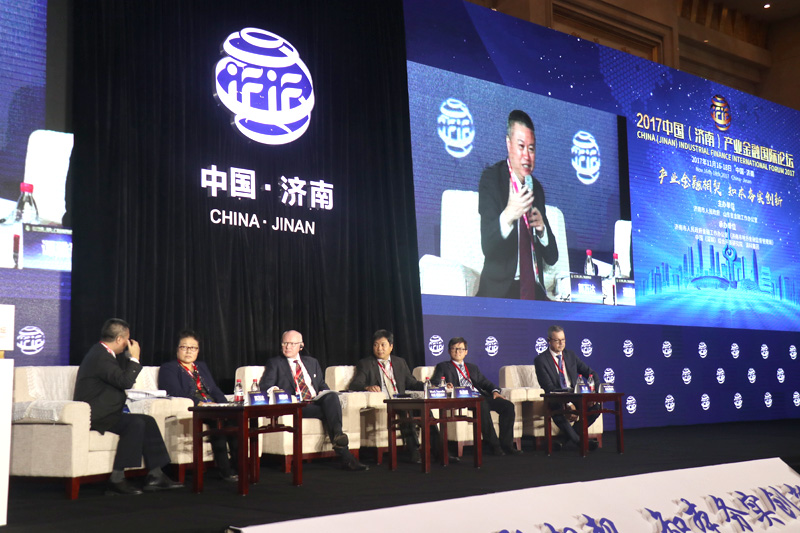
Venue: Shandong Hotel, Shandong, China
Organizer: CDI, and the Financial Office of Jinan Municipal People’s Government
Theme: Industrial Finance to Support Real Economy
Program
09:00-09:15 Opening Remarks
Speakers:
- WANG Zhonglin, Mayor, Jinan Municipal People’s Government
- GUO Qingping, Former Deputy Governor of The People’s Bank of China
09:15-10:35 Keynote Speeches
Speakers:
- Michael PETTIS, Professor of Finance, Peking University’s Guanghua School of Management
- YIN Jianfeng, Deputy Director-General, National Institution for Finance & Development
- WANG Hongbo, CIO, China Merchant Bank International Capital Management (Shenzhen) Ltd.
- Jon EDWARD, Chief Representative - China, London Stock Exchange
10:35-10:55 China Industrial Financial Development Index Launch
- GUO Wanda, Executive Vice President, CDI
10:55-12:15 Panel Discussion: To Build a Regional Industrial Finance Center
Moderator: GUO Wanda, Executive Vice President, CDI
Panelists:
- Peter BOFINGER, Professor for Monetary and International Economics, Würzburg University, and a Member of the German Council of Economic Experts
- TAN Yaling, President and Chief Economist, China Foreign Investment Research Institute
- Mark YEANDLE, Associate Director, Z/Yen Group
- ZHU Haibin, Chief China Economist and Head of China Equity Strategy, J.P. Morgan
- WU Qing, Chief Economist, China Orient Asset Management Co., Ltd.
12:15-13:30 Lunch
Highlights
Under the backdrop of high GDP generated from the financial industry, the resource allocation cannot meet the capital demand of the real economy. Finance should serve the industry, instead of playing a dominant role. To develop the industrial finance is an urgent need for economic growth.
Industrial finance faces three challenges: First, theoretical challenge, which means how to apply the theory which is applicable in an era with insufficient liquidity to an era with excess liquidity. Second, currency challenge, which means that as compared with Euro and USD, RMB is not an international currency, but a domestic one. Third, positioning challenge, which means that China is the largest developing country, while the United States is the most powerful economy in the world.
China witnesses an unbalanced and insufficient development in its financial industry, which could be demonstrated in the following aspects: First, the structure of the financial industry. Up to last year, the scale of the banking industry of China is twice that of the United States, but the number of non-bank financial institutions in the United States is over six times that of China. The underdeveloped non-bank financial institutions in China have impeded the development capital markets. Second, non-bank financial institutions transact business that should be done by the banks. For example, the universal life insurance of the insurance industry is indeed a solicitation of deposits with a high interest rate. Third, high financing costs in real economy and the increasingly expanding land finance. As a large amount of capital is invested in the real estate industry and infrastructure projects, the real economy will inevitably face financing difficulties and bear high financing costs. Fourth, underdeveloped capital market. Due to the backwardness of Chinese institution investors, the value of China’s stock market only amounted to USD 7 trillion last year, the value of bond market of less than USD 10 trillion, and the value of derivatives market was almost negligible. Fifth, opening-up. The value of China’ external assets only amounts to USD 6.5 trillion, accounting for one third that of the United States, which demonstrated its beginning stage of opening up.
China should follow four principles: returning to the fundamental purpose, optimizing structure, strengthening regulation and being market-oriented, to reform the financial industry and prevent systemic risks.
Firstly, return to the fundamental purpose to enable banks and non-bank financial institutions to give play to their original functions. The banking industry should be pushed forward through optimizing the loans and deposits business. The insurance industry should serve for risk guarantee, and then give full play to its financial functions as an institutional investor. The asset management industry should be entrusted by investors to manage assets. The principle of licensed operation and unified supervision for innovative finance such as the Internet finance should be followed. There are problems of homogenization in current banking system of China, such as excessive competition awareness and absent cooperation awareness. For example, small and medium-sized banks always turn to large enterprises like large banks in the end, instead of serving SMEs.
Secondly, optimize structure to vigorously develop financial service. The structure of capital market should be optimized to facilitate advanced manufacturing industry and modern service industry to finance in capital market. The structure of investors should be optimized to vigorously expand the number of institutional investors.
It should be pointed out that striving to develop direct financing should not be prescribed by policies but should be the result of market development. Given the global experience, the financing channel of large enterprises has transformed from banks to bonds, resulting in banks turning to target at SMEs. There is not a best mode among the multiple financing channels. As the economy of China is experiencing a shift in driving forces, the rapid growth of direct financing will be the evitable result of market development. It is difficult for new economy industries, namely industries with focus on human resources and intellectual property, to obtain sufficient funding support through the traditional channel. Therefore, the development of new economy industries will be supported mainly through innovative modes of PE and VC.
Thirdly, strengthen supervision. Financial management falls within the administrative authorities of the central government, but the risk disposal accountabilities on the local government should be strengthened and the ability of regulatory authorities to supervise should be enhanced. The Financial Stability and Development Committee newly set up under the State Council will be bound to have strong coordination ability. The supervision responsibility of the central bank on the financial market should be separated and the foreign exchange control system should be reformed. Finally, the macro-currency control framework should be strengthened.
Fourth, be market-oriented. Better playing the role of the government is the prerequisite to give full play to the decisive role of the market in the allocation of financial assets. The government should not directly or indirectly intervene with the allocation of financial assets, but to supervise the market in a clear and unified way and not allow the business and products from unsupervised institutions entering the market. The function of government is not necessarily to offer substantial capital support, but more importantly to provide a sound environment.
Fiscal system reform is the prerequisite for financial system reform. If the government could not transform the fiscal system from the development-oriented finance pursuing GDP to the public-oriented finance providing public goods, it would be difficult for the finance industry to serve the advanced manufacturing industry and modern service industry. What’s more, the reform of the financial industry and the real economy should be carried out simultaneously. If the reform of the real economy is not intensified, it will be extremely difficult to control risks in the financial reform.
Gallery
https://en.cdi.org.cn/component/k2/itemlist/category/76-2017-events#sigProId9c82162f23
Information
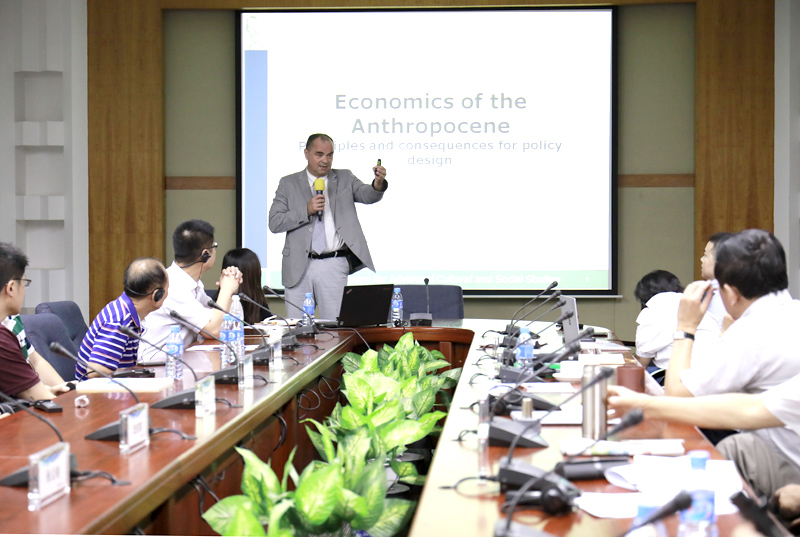
Venue: Room 101, CDI Mansion, Shenzhen
Host: CDI
Theme: Economics of the Anthropocene: Principles and Consequences for Policy Design
Program
Program
10:00-10:05 Opening Remarks
FAN Gang, President, CDI
10:05-11:05 Economics of the Anthropocene: Principles and Consequences for Policy Design
Carsten Herrmann PILLATH, Max Weber Centre for Advanced Cultural and Social Studies, University of Erfurt
11:05-11:55 Q&A
11:55-12:00 Closing Remarks
Highlights
The lecturer put forward four claims as follows:
Humankind has entered a new geological age, the Anthropocene, in which the technosphere, created, but not controlled by human action, evolves autonomously.
Human impact on Earth system is so pervasive that geologists have diagnosed a new geological age, the Anthropocene, in which the central phenomenon is emergence of the technosphere. In the Antropocence, Human thermo-dynamic impact is comparable to geological forces. The technosphere attempts to encapsulate in geological terms the bulk of human artifice, like urban areas, rural housing, pasture, cropland, etc. In essence, the term represents the “summed material output of the contemporary human enterprise”. Human action caused the emergence of the technosphere, but human design cannot control its evolution. Technology is a global network of humans and artefacts that evolves autonomously.
The evolution of the technosphere obeys general principles of evolutionary theory, which are ultimately grounded in principles of thermodynamics.
The economy stands at the centre of technosphere evolution. Technological innovation is driven by economic decisions. The technosphere is productive, and production processes are mainly controlled in the human economy. We need an evolutionary economic theory that combines with evolutionary analysis of the technosphere and extend thermodynamic principles. Technosphere as ‘heat engine’ in which the human economy drives its own expansion: growth.
Economic growth and energy throughput are manifestations of Maximum Power and Maximum Entropy principles, and urbanization is the material embodiment.
All open, non-linear and non-equilibrium systems manifest the Maximum Entropy Production Principle, mediated via the Maximum Power Principle governing evolution. Economic growth manifests Maximum Power. Energy throughputs drive economic growth. The core type of mechanism linking energy and growth is ‘rebound effects’: Increasing efficiency in energy usage causes growing absolute throughputs. The city is a complex socio-technological system and central artefact of the technosphere. Urbanization goes hand in hand with increasing power densities. In particular, the economic forces that drive the concentration of cities and favour high-rise buildings also increase power densities. However, this creates a dilemma for further growth: The power densities of renewables and of urban settlements do not match.
Policy design must heed attention to these facts and must aim at switching to a new growth regime, the stationary state.
From the viewpoint of the theory proposed here, only solar energy can resolve the energy dilemma of the future. First, only solar energy is thermodynamically neutral, in the sense of, firstly, not feeding additional energy into the Earth system, and moreover, in harnessing the most abundant supply of energy in the least intrusive way. Second, only the use of solar energy follows Maximum Power, because it transforms radiation into usable energy, which otherwise would dissipate as heat, thus enhancing the free energy of the Earth system. Given the power density mismatch, however, this requires a fundamental rethinking of current patterns of urbanization. The basic approach is decentralizing the energy system, and containing further urban concentration.
Here are implications for policies.
The central policy measure must increase the costs of energy: the energy tax. Higher taxes on energy will push the energy price high enough, which will encourage people to switch to alternative energy sources. The long term vision is to combine a stationary thermodynamic state of the Earth system with a growing economy. With stationary population growth and an energy tax, combined with modern technology, a fundamental structural shift of the economy becomes possible.
Gallery
https://en.cdi.org.cn/component/k2/itemlist/category/76-2017-events#sigProIdd8e318fedd
Information

Three issues were discussed during the forum including "Urban Renewal and Development", "Urban Management and Development" and "The Bay Area Economy and Development ".
Venue: Social Sciences Innovation Base, Shanghai, China
Host: CDI, Shanghai Academy of Social Sciences, Binhai Research Institute in Tianjin
Theme: Urban Renewal and Bay Area Economy
Program
09:30-10:15 Opening Remarks and Keynote Speeches
Moderator: Shao Jian, Director of Research Management Office, Shanghai Academy of Social Sciences
Panelists:
- Zhou Wei, Vice President, Shanghai Academy of Social Sciences
- Yang Jinxing, President, Binhai Research Institute in Tianjin
- Liu Zhongpu, Full-time Member, the Consultation Commission for the Shenzhen Municipal CPC Committee
10:15-10:30 Tea Break
10:30-12:00 Session One: Urban Renewal and Development
This session will focus on the renewal and maintenance of urban infrastructure, the upgrading of residential areas, the inheritance of community culture and policy mechanisms.
Moderator: Zhou Wei, Vice President, Shanghai Academy of Social Sciences
Panelists:
- Li Jiang, Director, Shenzhen City Planning and Land Resource Research Center
- Zeng Zhen, Director of Urbanization Department, CDI
- Wan Lin, Professor, Shanghai Jiao Tong University
- Wan Yong, Director of Institute Applied Economics, Shanghai Academy of Social Sciences
- Zhu Xinwei, Planner, Tianjin Urban Planning and Design Institute
- Tan Jian, Planner, Tianjin Bohai Urban Planning and Design Institute
12:00-13:30 Lunch
14:00-15:20 Session Two: Urban Governance and Development
This session will focus on the city management and explore the relationship between belts and blocks to provide practical solutions for city development.
Moderator: Jiang Ning, Vice President, Binhai Research Institute in Tianjin
Panelists:
- Zhang Fan, President, Shanghai Urban Planning and Design Research Institute
- Lu Hanlong, Former President, Shanghai Academy of Social Sciences
- Li Jinkui, Senior Research Fellow, CDI
- Gao Hong, Director, Shenzhen Urban Development Center
- Jin Gang, Deputy Director, Office for Policy Research, Administration Committee of Tianjin Economic-Technological Development Area
- Wang Li, Director of Institute of Industrial and Regional development, Shanghai Academy of Social Sciences
15:20-15:30 Tea Break
15:30-16:50 Session Three: The Bay Area Economy and Development
This session mainly discusses the Guangdong-Hong Kong-Macao Greater Bay Area involving Shenzhen, the Hangzhou Bay Area involving Shanghai and the Greater Bohai Bay Area involving Tianjin.
Moderator: Li Jinkui, Senior Research Fellow, CDI
Panelists:
- Jiang Ning, Vice President, Binhai Research Institute in Tianjin
- Wu Xiaoqing, Research Fellow, Binhai Research Institute in Tianjin
- Liu Zhongpu, Full-time Member, the Consultation Commission for the Shenzhen Municipal CPC Committee Ren Ting
- Zhang Yuge, Director of Hong Kong-Macao Economic and Social Research Center, CDI
- Ning Yumin, Director of Urban and Regional Science Department, East China Normal University
- Zhu Jianjiang, Director of Urban and Population Department, Shanghai Academy of Social Sciences
16:50-17:05 Closing Remarks
Moderator: Zhou Wei, Vice President, Shanghai Academy of Social Sciences
Panelists:
- Zhou Wei, Vice President, Shanghai Academy of Social Sciences
- Guo Wanda, Executive Vice President, CDI
Yang Jinxing, President, Binhai Research Institute in Tianjin
Highlights
In the next round of city transformation, city renewal will improve the city functions. First, city renewal still needs to follow the law of urban development and to promote comprehensive renovation in a bid to improve city environment. Second, renovation of old city areas will make full use of old buildings and realize “more renovation and less demolition” with integrating the new and the old.
In the current stage, city governance mechanisms in our country still face many problems, for example, insufficient social and civil services, relatively low participation in urban public affairs, limited presence of social organizations, etc. A sound mechanism among government, businesses and society is vital in ensuring the smooth functioning of city governance, among which, a diversified community with self-governance system will be built and developed, and non-profit organizations at the basic level of urban life will be encouraged to play a bigger role in social governance under the government’s guidance. It is suggested that “extensive social governance” will give place to a standardized social governance mode that puts people first in order to achieve rule of law, rule of virtue and self-governance.
The development of bay areas provides new opportunities for the sustainable development of urban economy, while setting higher requirements for bay area’s capacity in bringing together resources for coordinated development. For example, discrepancies exist between the cities in the Guangdong-Hong Kong-Macao Greater Bay Area, but such imbalances also bring new opportunities for growth. We should break administrative boundaries between cities and integrate resources. A well-functioning modern collaborative industrial system and a metropolitan commuter zone will be of great significance to promoting the balanced development of economy and society in the region.
Gallery
https://en.cdi.org.cn/component/k2/itemlist/category/76-2017-events#sigProId247f512771
Date: September 8, 2017 Venue: Sheraton Aggie Grey’s Hotel, Apia, SAMOA Host: CDI Theme: The 21st Century Maritime Silk Road: Pacific Islands-China Economic Cooperation for Sustainable Development
09:00-09:05 Opening Prayer Reverend Utufua Naseri Introduction H.E. Mr. Tapusalaia Toomata, Samoa Ambassador to China MC: Mr. Tagaloa Eddie Wilson, President of Samoa Manufacturers Association 09:05-09:15 Official Welcome and Opening Statement Hon. Lautafi Selafi Purcell Minister of Commerce, Industry and Labour, SAMOA 09:15-09:25 China and the Pacific Islands H.E. Mr.Du Qiwen, China’s Special Envoy for the China Pacific Islands Forum Dialogue 09:25-09:35 The Pacific Islands and China Shiu Raj, Director Policy & Economic Governance, Pacific Islands Forum Secretariat 09:35-09:45 Pacific Islands-China Trade and Investment Cooperation 10:30-11:00 Coffee Break and Networking 14:00-14:45 Panel Discussion Moderated by Chris Cocker, CEO, South Pacific Tourism Organization • Papalii Sonja Hunter, CEO, Samoa Tourism Authority & SPTO Chairperson • Eroni Puamau, General Manager, Rosie Holidays, Fiji • Lucy Niu, Executive Director, Research Centre for Pacific Studies, Beijing Foreign Studies University • Xiao Dan, General Manager, South Pacific Connections • Joseph Chou, Vice President, Luen Thai Tourism & Hospitality Group • Hu Zhenyu, Director, Sustainable Development & Blue Economy, China Development Institute • Lai Jianguang, CEO, Dear Island Company • Luo Dan, Head of R&D, CAISSA Cruises • Tapusalaia Toomata, SamoaAmbassador to China 14:45-15:30 Questions and Discussions 15:50-16:35 Panel Discussion Moderated by Samuel Chou, President, Liancheng Overseas Fishery • Huang Fuxiong, Chairman, Guangdong Overseas Fisheries Association • James Movick, Director General, Forum Fisheries Agency (FFA) • Professor Long Long, Senior Research Fellow, China Development Institute • Su’a Tanielu Su’a, Manager Samoa Traditional Farmers and Growers Company and former Director General of FFA • Jonathan Manieva, Executive Officer, Pacific Is Tuna Industry Association, PNG 16:35-17:20 Questions and Discussions 15:50-16:35 Panel Discussion Moderated by Samuel Chou, President, Liancheng Overseas Fishery • Huang Fuxiong, Chairman, Guangdong Overseas Fisheries Association • James Movick, Director General, Forum Fisheries Agency (FFA) • Professor Long Long, Senior Research Fellow, China Development Institute • Su’a Tanielu Su’a, Manager Samoa Traditional Farmers and Growers Company and former Director General of FFA • Jonathan Manieva, Executive Officer, Pacific Is Tuna Industry Association, PNG 16:35-17:20 Questions and Discussions 17:20-17:30 Conclusion and thanks Tapusalaia Toomata Ambassador of Samoa to the People’s Republic of China 17:30 Close
To further coordinate policies and joint operations with countries along the Maritime Silk Road for comprehensive, multi-layered and wide ocean-based partnership, China Development Institute, in collaboration with China Council for the Promotion of International Trade, the Government of Samoa and the Pacific Islands Forum Secretariat, held on September 8, 2017 a forum themed “21st Century Maritime Silk Road: Pacific Islands-China Economic Cooperation for Sustainable Development”, whose agenda contains the following aspects. Deepen bilateral cooperation for policy coordination At the opening ceremony, the Minister of Industry and Labour of Samoa first outlined the status quo and challenges for the bilateral trade between China and Pacific islands, and stressed the importance of an even closer trade and economic relationship with China under the Belt and Road Initiative. China’s Special Envoy for Pacific Islands Affairs shared China’s policies for Pacific islands under the Belt and Road Initiative, and expressed China’s wish to continue to support the socio-economic sustainability of island countries. The delegate of China Development Institute, focusing on the prospects for China-Pacific Islands cooperation, expounded on the opening up policies and achievements of the Belt and Road Initiative, and suggested that China and Pacific islands jointly seize the opportunity made possible by the Belt and Road Initiative, and accelerate the economic growth as well as China-Pacific trade and economic cooperation by enhancing partnership in macro-tourism, boosting trade and the provision of public goods in Pacific islands. Improve infrastructure for an interconnected Pacific Delegates of Pacific islands stated that the obstacles for China-Pacific trade and economic cooperation under current circumstances include long distance, small market and limited choice of goods. China and Pacific islands should enhance cooperation on international airline and maritime transport, improve air transport service networks among countries along the Maritime Silk Road to facilitate transport. In respect to problems concerning infrastructure in the Pacific region, the delegate of CDI put forward three proposals: firstly, infrastructure shall start off before other endeavors with financial support by preferential policies to boost development, including that of the Asian Infrastructure Investment Bank and the Silk Road Fund; secondly, build industrial clusters capitalizing on infrastructure to form industrial parks for improved capacity of localization; thirdly, establish transport hubs and nodes to build an interconnected logistics network. Explore pathways for sustainable tourism based on local conditions Tourism is the major industry of many Pacific island countries. The environmental and resources sustainability of Pacific islands is an essential factor should be taken into consideration for local tourism development. One of the delegates of South Pacific islands believed that in light of the current under-funded infrastructure of tourism zones among Pacific islands, he wished that China could increase its investments in infrastructure of local tourism zones, and at the same time, Pacific island countries should mitigate climate change through raising awareness for sustainable development and collaborating with other countries. The delegate of CDI proposed his perspectives for tourism development of Pacific islands that Pacific island countries shall operate more direct international flights along with customized services to attract a greater number of foreign visitors. In addition, China and Pacific islands shall encourage the exchanges among important cities and build a tourism network for Pacific islands by operating direct flights among them. Enhance implementation of marine conservation and rationally utilize aquatic resources in the Pacific Fishery represents the most abundant resource of Pacific islands, which however is threatened with overfishing of certain species. The delegate of China believed that despite rich marine resources, the economy of Pacific islands remains underdeveloped. China’s far ocean fishery sector shall pool advantages to utilize local fishery resources in a rational manner through regulating the market behaviors of fishery companies and aligning with local policies and regulations. The delegate of CDI believed that the current over-dependence on “far-ocean fishing” constitutes an important factor behind the difficulty to achieve economies of scale among Pacific islands. In future, “far ocean aquaculture” shall be made an integral part of “far ocean fishery”, and it is also advisable to integrate multiple businesses including fishing, aquaculture, processing, angling, leisure travel and experimental tourism to explore scalable marketing models for multiple islands as one collective tourist destination. The meeting has significantly deepened China-Pacific bilateral relations, firstly, has provided a platform for delegates and experts from important sectors including trade, investment and tourism from China and the Pacific region to gather together for effective communication. On the one hand, it has led to a clearer understanding of the course of development for China-Pacific trade and economic cooperation in future, and on the other has provided timely and complete market information and investment guidelines for Chinese companies investing in Pacific islands, thus reducing their risks in overseas investment. Secondly, the Belt and Road Initiative, which involves interconnectivity of transport and integration of telecommunication networks, provides Pacific island countries currently marginalized in the global economy a significant opportunity to integrate with the Chinese market through increased economic cooperation. Thus, China should make full use of this opportunity through preferential loans and development assistance to support infrastructure construction in Pacific islands according to local realities and proactively facilitate their efforts to improve such sectors as transport, trade, logistics and tourism. Moreover, to serve the construction of the China-Oceania-South Pacific passage and to provide intellectual support for trade and economic cooperation between China and Pacific islands under the Belt and Road Initiative, China shall conduct in-depth study of countries along the Maritime Silk Road and organize visits to those countries for Chinese companies having an interest, and have a better understanding of the interests and concerns of relevant island countries, so as to facilitate targeted investment and project assistance, in a bid to effectively meet the demand for public goods and services in Pacific islands.
Information
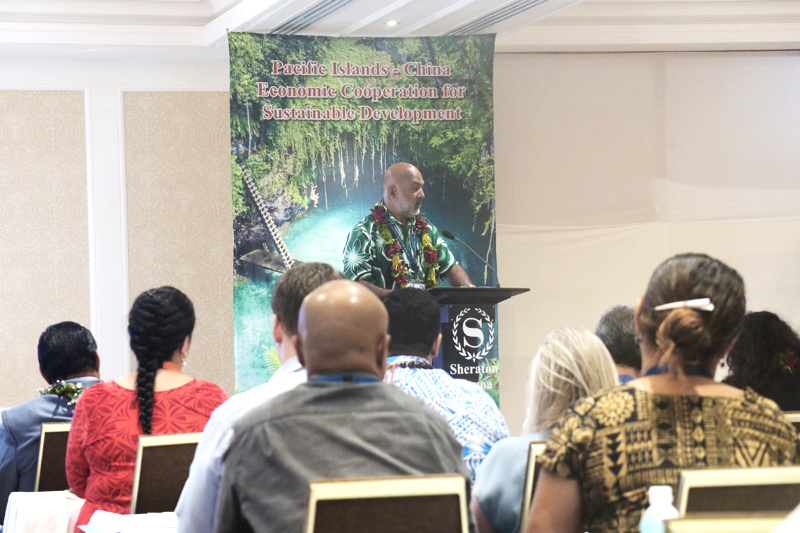
Program
Highlights
Gallery
https://en.cdi.org.cn/component/k2/itemlist/category/76-2017-events#sigProId6521e7049e
Information

Date: September 11, 2017
Venue: Tianfu Fund Town, Chengdu
Host: CDI, Z/Yen Group
Theme: The Global Financial Centres Index 22
Program
14:30-15:00 Registration
15:00-15:10 Opening Remarks
XIE Ruiwu, Municipal party committee member and Executive Vice Mayor, CPC Chengdu
15:10-15:30 GFCI 22 Launch
Michael MAINELLI, Director, Z/Yen Group
15:30-15:50 GFCI 22 Greater China Financial Centres Review
YU Lingqu, Deputy Director, Department of Finance and Modern Industry, CDI
15:50-16:10 Q&A
Michael MAINELLI, Director, Z/Yen Group
LIANG Qizhou, Secretary of the Leading Party Group and General Director, Chengdu Municipal Bureau Of Financial Work
YU Lingqu, Deputy Director, Department of Finance and Modern Industry, CDI
16:10 Conclusion
Highlights
London and New York remain in first and second places. Interestingly, despite the ongoing Brexit negotiations, London only fell two points, the smallest decline in the top ten centres. Hong Kong has moved just ahead of Singapore into third – only two points ahead on a scale of 1,000. Tokyo remains in fifth.
There are seven cities across the Chinese mainland rated in the GFCI 22, namely Shanghai, Beijing, Shenzhen, Guangzhou, Qingdao, Dalian and the newcomer Chengdu. Among them, Shanghai got 711 points and ranks 6th, rising 7 places in the rankings. Beijing rose 6 places to the 10th position. Shenzhen got 689 points and ranks 20th, rising 2 places. Shanghai, Beijing ,and Shenzhen are in the top 20 financial centres. Guangzhou ranks 32nd and Qingdao ranks 47th. Chengdu, first enlisted in the GFCI rankings from the associate centres list, ranks 86th and got 604 points. Dalian fell to 92nd.
Western European financial centres are still volatile. Frankfurt, Dublin, Paris and Amsterdam all rose, but Zurich, Geneva, and Luxembourg fell in the ratings. Overall assessments for the European centres continued to fluctuate as people speculate about which centres might benefit from London leaving the EU.
The leading financial centres in the Asia/Pacific region fell in the GFCI ratings. All of the top ten centres in the region fell in the ratings with Singapore, Tokyo, and Osaka all showing marked declines.
All centres in North America fell in the GFCI ratings. New York fell. San Francisco, Boston, Chicago, and Washington also saw large falls. The decline of Canadian centres was less severe than the falls of the USA centres.
All of the Eastern European centres rose in the ratings. Cyprus, Athens, St Petersburg, and Moscow reversed some of their recent declines.
Financial centres in the Middle East and Africa showed mixed results in GFCI 22. Dubai and Casablanca fell slightly, but other centres in the region did well.
Latin American and Caribbean centres did well. The Caribbean centres of the British Virgin Islands and the Bahamas saw strong rises. Sao Paulo and Rio de Janeiro also did well.
European ‘island’ centres did well. The British Crown Dependencies of Jersey, Guernsey, and the Isle of Man all per-formed strongly and there were also strong rises for Malta, Reykjavik, and Gibraltar.
The GFCI provides profiles, rating and rankings for 108 financial centres, drawing on two separate sources of data – 102 instrumental factors (five broad ‘areas’ of competitiveness, namely business environment, financial sector development, infrastructure, human capital and reputational factors) measured externally and 23,812 financial centre assessments by 2,058 international financial professionals in an ongoing online questionnaire. It was first published in 2007 and then updated and republished each September and March.
Gallery
https://en.cdi.org.cn/component/k2/itemlist/category/76-2017-events#sigProId5ad52287fe
Information
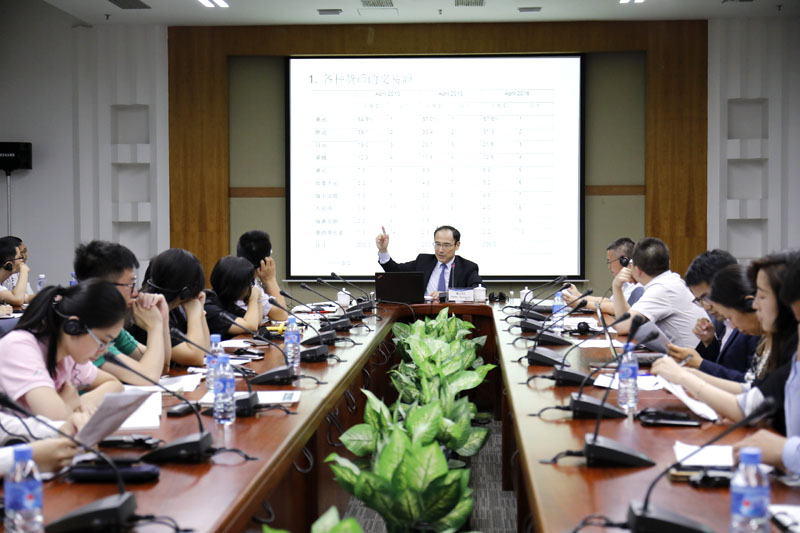 CDI invited Professor Yosuke Tsuyuguchi from the College of Economics, Nihon University to share the experience of Yen’s internationalization, including the gains and losses in the internationalization process and how the process is relevant to RMB internationalization.
CDI invited Professor Yosuke Tsuyuguchi from the College of Economics, Nihon University to share the experience of Yen’s internationalization, including the gains and losses in the internationalization process and how the process is relevant to RMB internationalization.
Date: August 25, 2017
Venue: Room 101, CDI Mansion, Shenzhen
Host: CDI
Theme: Rethinking RMB Internationalization: Why is Japan so Prudent about Yen’s Internationalization?
Program
Program
14:30-14:35 Opening Remarks
GUO Wanda, Executive Vice President, CDI
14:35-15:35 Dialogue: Rethinking RMB Internationalization: Why is Japan so Prudent about Yen's Internationalization?
Yosuke TSUYUGUCHI, Professor, College of Economics, Nihon University
15:35-16:25 Q&A
16:25-16:30 Closing Remarks
Highlights
Highlights
RMB can learn the experience of the internationalization of the Japanese Yen, which is the third largest currency globally. Closely related to domestic and international economic landscape, each stage of Yen’s internationalization shows distinct features. Since the setback in Yen’s internationalization process in the 1980s and 1990s, efforts have been made to improve the domestic financial market, enhance cooperation with other regions in Asia and increase Yen use in the region, leading to the next breakthrough in the international process of the currency.
From the transaction volume of global currencies and the proportion in global foreign exchange reserve, the Yen is a third-ranking international currency. In terms of the transaction volume in 2016, the U.S. dollar, the Euro and the Japanese Yen are still the top three international currencies, with a market share of 87.6%, 31.3% and 21.6% respectively. The RMB ranks 8th with a market share of 4.0%. The statistics issued by the IMF in March, 2017 shows that the top three international currencies are still the U.S. dollars (5709 billion dollars, accounting for 64.5%), the Euro (1706 billion dollars, accounting for 19.3%) and the Yen (403 billion dollars, accounting for 4.6%) . The RMB ranks 7th with 88 billion U.S. dollars, accounting for 1.0 %. In the above two rankings, the status of the Japanese Yen is increasingly established with significant advantages, ranking the 3rd in a considerably long period, but with rather low use rate in international trade.
Process of the Yen’s internationalization
The rapid development of Japan’s economy in the 1970s and the opening of the financial market provided an opportunity for the Japanese Yen to go international. In 1984, Japan’s Ministry of Finance issued an announcement titled “The Current Status and Prospect of Financial Liberalization and Japanese Yen’s Internationalization”, achieving the full liberalization of the capital account and officially starting the process of Yen’s internationalization. Despite a series of measures to promote Yen’s internationalization, the scale of use in international trade in goods and financial transactions still fell far short of the expectations of the Japanese government.
The setbacks in interest rate liberalization and economic bubbles have affected the progress of Yen’s internationalization. In retrospect, Japan revised the law on foreign exchange management in 1980, and abolished the limit on trade between the Yen and foreign exchange in 1984, thus introducing the freely floating exchange rate regime and liberalizing the transaction of capital account items, but the reform on interest rate failed. Meanwhile, “window guidance” still applied by Japan’s central bank has had a negative impact on the effectiveness of Japan’s monetary policies, resulting in a huge influx of capital into Japan, which became an important trigger for the country’s economic bubbles. The occurrence of the bubble economy and its final burst severely disrupted the financial market of Japan and also hindered the internationalization of the Yen.
The low interest rate and low foreign exchange rate policy has weakened the Yen’s appeal for investors, putting its internationalization under huge pressure. Following the burst of the bubbles, Japan’s central bank switched from the previous monetary tightening to a slash of interest rate to recover the economy and boost domestic demand. Between 1991 and 1995, the central bank downwardly adjusted the benchmark discount rate for a total of 9 times, and the interest rate of the Yen has been at relative lows throughout the “lost two decades”. Meanwhile, with the turbulence in financial market in the wake of the Asian financial crisis and the substantial devaluation of the Yen, the value of the Japanese Yen against the U.S. dollar was in a long-time doldrums. Against these dual backdrops, foreigners were lukewarm about investing in Yen. The internationalization of Yen slowed down again due to insufficient demand from the external market.
Experience from the Yen’s internationalization
The experience of Yen’s internationalization shows that a currency’s internationalization process and domestic financial system are complementary to each other. In particular, the integrity of domestic financial system and whether the market is liberalized enough to meet the needs of internationalization will have huge impact on the internationalization process. Therefore, the internationalization of the RMB shall be steadily promoted while firmly situated in the context of Chinese financial market realities.
First, it is essential to properly measure financial liberalization reform. The setbacks experienced by the Japanese Yen in internationalization shows that the optimal time sequence is to first liberalize interest rate and foreign exchange rate, and adjust domestic monetary policies, before opening up the capital market. In promoting the internationalization of the RMB, it would be highly risky to speed up the opening and liberalization of the capital account without supporting reforms. Before achieving full development of China’s financial market, it might be impossible for offshore operations to avoid risks and shocks, which will threaten the stability of the domestic financial market. The precondition for an open and liberal capital account is therefore free exchange rate and interest rate with timely adjustments of monetary policies.
Secondly, the opening of the financial market shall be dynamic while maintaining stability. The marketization of interest rate in Japan is a slow and gradual process, during which period Japan’s financial market has maintained overall stability. From this sense, the “window guidance” policy by the Japanese government is not without merits. However, being overly focused on the stability of financial market at the expense of the reform would increase the vulnerability of Japan’s financial system, which became all the more evident with the emergence of non-performing loans following the burst of bubbles. Therefore, China must approach financial stability with a holistic view, promoting financial reform at a measured pace while adjusting monetary policies to create favorable conditions for the internationalization of the RMB.
Regional economic cooperation to bolster the internationalization of a currency
Since the 2008 financial crisis, Japan gradually stepped up its economic and financial cooperation with other Asian countries in a bid to facilitate the internationalization of the Yen by promoting its use regionally. Such experience is also of reference value for China in promoting RMB internationalization.
The integration into regional economic and financial cooperation is conducive to enhancing the competitiveness of the local currency. It has become a consensus between China and Japan to reduce dependence on the U.S. dollar and the use of it since the outbreak of the financial crisis in 2008, with the cooperation on currency becoming a new area where financial interests converge. In June 2012, direct cross-border trade between the Japanese Yen and the RMB was officially made possible, simultaneously starting the direct trade between the Yen and the RMB in Tokyo and Shanghai. The report on Japan’s foreign exchange issued by Japanese Ministry of Finance mentioned Japan’s willingness to enable direct trade with other Asian countries, as well as a foreign currency settlement system covering the RMB. This came as a new opportunity for China and Japan to cooperate on the internationalization of their respective currencies. It is of great significance to promote currency cooperation between the two countries and across Asia.
Gallery
https://en.cdi.org.cn/component/k2/itemlist/category/76-2017-events#sigProId2820483b03
Information
 The annual meeting is intended to explore the way to update management procedures, regulations, optimize and deploy innovative resources efficiently with new economic engine introduced in place of the old one, as China’s economy is transitioning to a new normal. It also serves as a productive platform for Chinese enterprises and the academia to discuss how to accelerate the sound development of new economy and to seek policy proposals for the reference of policymakers.
The annual meeting is intended to explore the way to update management procedures, regulations, optimize and deploy innovative resources efficiently with new economic engine introduced in place of the old one, as China’s economy is transitioning to a new normal. It also serves as a productive platform for Chinese enterprises and the academia to discuss how to accelerate the sound development of new economy and to seek policy proposals for the reference of policymakers.
Date: August 9, 2017
Venue: International Conference Room, First Floor, CDI Mansion
Host: CDI, Shenzhen Soft Science Development Foundation (SSSDF)
Theme: New Economy and Old System-Inclusiveness and Innovation
Program
Shenzhen Annual Meeting 2017
14:00-14:30 Registration
14:30-14:45 Opening Remarks
Fan Gang, President, CDI
Xu Yongfa, Chairman, Shenzhen Soft Science Development Foundation
Moderator: Guo Wanda, Executive Vice President, CDI
14:45-15:00 CDI Report on New Economy and Old System
Zheng Yujie, Director, Information and Communications Department, CDI
15:00-15:45 Session One: Inclusive Institutions
Moderator: Guo Wanda, Executive Vice President, CDI
Panelists:
Zhu Yanmei, Executive Vice President, BGI
Wang Zhile, Senior Researcher, Chinese Academy of International Trade and Economic Cooperation (MOFCOM)
Fan Jianping, President, Shenzhen Institutes of Advanced Technology, Chinese Academy of Sciences
15:45-16:00 Q&A
16:00-16:20 Coffee Break
16:20-17:05 Session Two: Innovative Development
Moderator: Tan Gang, Vice President, Shenzhen Municipal Party School
Panelists:
Geng Wenqiang, General Manager, BVOC
Liang Chunxiao, Senior Advisor, AliResearch
Fan Mingtai, Researcher, Institute of Quantitative& Technical Economics, Chinese Academy of Social Sciences
Wang Yanmei, Director, Shenzhen Nanshan Science and Technology Office
17:05-17:20 Q&A
17:20-17:30 Closing Remarks
Guo Wanda, Executive Vice President, CDI
Highlights
Here are excerpts from the Shenzhen Annual Meeting 2017.
“There is still the ongoing conflicts between the new economy and the old system”.
Despite new demands for the installation of phone holders within cars, car manufacturers still find it impossible to fill the gap in this particular niche market due to the arrangements and conflicts of interests in the old system. Moreover, under the new policies for online car-hailing services, local players tend to be rather passive or even resistant to the development of online car-hailing services due to vested interests. Proper management of online car-hailing services is worth deep consideration.
Fan Gang, President, CDI
“China’s economic structure shows a lot of exciting changes. The growth pace of the new economy, new business forms and models is staggering”
While new technologies and industries bring about large-scale investment in fixed assets and the upgrading of consumption, they have also created an extremely flexible labor market for a large number of informal and flexible economies. But faced with problems of fragmentation, regulatory lag, absence of regulation and overlapping functions, the implementation measures of policies and regulations are crucial.
Zheng Yujie, Director, Information and Communications Department, CDI
“To develop the new economy, a shift in management concepts is essential.”
The “three-in-one” system of BGI can boost effective interactions among scientific research, clinical medicine and industries to foster a long-term sustainable development model. BGI’s efforts in this era of life economics can bring gene-related diseases including smallpox and polio under complete control, and in which process find solutions to problems related to the new economy and the old system.
Zhu Yanmei, Deputy Executive President, Beijing Genomics Institute (BGI)
“The shift in mindset to be the precondition for innovation in policies related to foreign capital, namely, to change the thought of state of invest import to export”
This shift in mindset has to be supported by a complete set of new theories to be truly effective. And the discussion about innovation is only meaningful after policies enabling such a shift in mindset have been put in place.
Wang Zhile, Research Fellow, Chinese Academy of International Trade and Economic Cooperation, MOFCOM
“Shenzhen is able to become the first city to ever formulate a law on science and a law on new scientific research institutions.”
The management systems for capital, personnel and whatsoever are lagging behind. This means that scientists are actually trying to innovate with heavy shackles. Therefore, how to innovate management to liberate the productivity of science and technology will be one major challenge for us.
Fan Jianping, President, Shenzhen Institutes of Advanced Technology, Chinese Academy of Sciences
“The development of an innovation-oriented society requires the consensus between government and enterprises”
With what we have understood to be the trends of the new economy in future, the discussion about the new economy and the old system will only be meaningful based on the consensus and sharing among government, research institutions and industries. And with the rise of the new economy, sharing, in replacement of labor division, is growing into a more dominant structure of the whole economy.
Liang Chunxiao, Senior Consultant, Ali Research
“The external support and the innovative awareness of enterprises themselves help Shenzhen become China’s innovation hub.”
First, Shenzhen boasts a unique social atmosphere where innovation is encouraged and failure tolerated, and most importantly the government’s support, guidance and inclusiveness, as well as intellectual support by research institutions for relevant industries. Second, the enterprises have set high standards for their own industries, give importance to core technologies and the building of core technical teams, as well as the sustainability of innovation concepts to lay a solid foundation for continued innovation in future.
Geng Wenqiang, General Manager, EVOC group
“The promotion of the deep integration of innovation resources is the key to the prospects for innovation development.”
The concept of "one foundation and two integrations” really matters. “One foundation” refers to the development of the digital economy, especially the new economy and emerging business forms. "Two integrations” refers to the deep integration between the manufacturing and service industry, and the gradual integration of trade and investment from an open perspective. However, attention must be paid to the balance between innovation and regulation, as well as the inclusiveness of the system.
Fan Mingtai, Research Fellow, Institute of Quantitative & Technical Economics, Chinese Academy of Social Sciences
“A combination of various policy instruments should be adopted by all sectors of society to speed up the integration of innovation resources towards an even more enabling policy environment for industries.”
Qianhai’s status as a place where the “bay area, special zone and free trade zone” overlap has brought considerable resources to the district. In the process of developing new business forms in Shenzhen, the government promotes industrial innovation through incentive policies and proper regulations, which plays a positive role in promoting industrial innovation in Shenzhen.
Wang Yanmei, Head, Shenzhen Nanshan Science and Technology Office
Gallery
https://en.cdi.org.cn/component/k2/itemlist/category/76-2017-events#sigProIdd89ce3610c
South Pacific Night: Opening a New Chapter in Cooperation between China and Pacific Island Countries
Information
 In June 2017, the Chinese government released a document entitled “Vision for Maritime Cooperation under the Belt and Road Initiative” which promotes the partnership between the nations along the Maritime Silk Road. To promote economic, trade and cultural between China and the Pacific Island countries, the event was held during which a Memorandum of Understanding (MOU) was signed between CDI and PTI.
In June 2017, the Chinese government released a document entitled “Vision for Maritime Cooperation under the Belt and Road Initiative” which promotes the partnership between the nations along the Maritime Silk Road. To promote economic, trade and cultural between China and the Pacific Island countries, the event was held during which a Memorandum of Understanding (MOU) was signed between CDI and PTI.
Date: July 13, 2017
Venue: Multi-functional Room, CDI Mansion, Shenzhen
Host: China Development Institute (CDI), Pacific Islands Trade and Investment (PTI)
Theme: Opening a New Chapter in Cooperation between China and Pacific Island Countries
Programme
16:00-16:20 Registration
16:20-16:45 Yap Dance Performance
16:45-16:50 Introduction
Moderator: LI Jinkui, Senior Research Fellow, CDI
LIU Zhijie, International Cooperation Department, CDI
16:50-17:05 CDI Speech: The Best Time for Cooperation between China and Pacific Islands
Speaker: FAN Gang, President, CDI
17:05-17:20 PTI Speech: South Pacific Opportunities
Speaker: David Morris, Trade Commissioner, PTI (China)
17:20-17:25 MOU Signing Ceremony
17:25-17:50 Yap Dance Performance
Highlights
The joint establishment of MOU between CDI and PTI (China) aims to facilitate economic, trade and investment linkages between China and the Pacific Island countries under the “Belt and Road” Initiative by cooperatively providing a platform for policy studies, academic exchange and outreach programs. What’s more, here are excerpts from the event below:
“China and the Pacific Island countries have vast potential in cooperation on economy, trade, investment and sustainable development.”
Under the Vision for Maritime Cooperation under the “Belt and Road” Initiative released by the Chinese government, China and the Pacific Islands shall promote the blue economy cooperation to address climate change, enhance economic performance, improve people’s livelihood, and combat the backlash against globalization.
FAN Gang, President, CDI
“It requires China, South Pacific Islands and other countries to work together to build a sustainable, blue economy in the era of globalization.”
Partnership and cooperation is not easy. It calls for practical steps that deliver on the needs of all partners, for mutual benefit. The Maritime Silk Road proves to be a sound platform for practical cooperation in building the infrastructure and connectivity that will bring China and the Pacific Islands closer. The Pacific Islands Trade and Investment will work together with CDI to observe what works and to explore practical steps to build the Maritime Silk Road.
David Morris, Trade Commissioner, PTI (China)
Gallery
https://en.cdi.org.cn/component/k2/itemlist/category/76-2017-events#sigProId31178742ef
More...
Information
 Dr. Sean Randolph, senior director of Bay Area Council Economic Institute, analyzed the particular relevance of both San Francisco Bay Area and Silicon Valley for the future development of Guangdong-Hong Kong-Macao Great Bay Area and Shenzhen.
Dr. Sean Randolph, senior director of Bay Area Council Economic Institute, analyzed the particular relevance of both San Francisco Bay Area and Silicon Valley for the future development of Guangdong-Hong Kong-Macao Great Bay Area and Shenzhen.
Hosted by: CDI
Theme: Building a Global Innovation Center: Experience of San Francisco Bay Area and Silicon Valley
Programme
15:00-15:05 Opening Remarks
GUO Wanda, Executive Vice President, CDI
Moderator: LI Jinkui, Senior Research Fellow, CDI
15:05-16:05 Report on Building a Global Innovation Center: Experience of San Francisco Bay Area and Silicon Valley
Speaker: Sean RANDOLPH, Senior Director, Bay Area Council Economic Institute
16:05-16:55 Q&A
16:55-17:00 Closing Remarks
Highlights
The Silicon Valley Model for Innovation-based Bay Area
With Silicon Valley located in the southern part, the San Francisco Bay Area has become a renowned R&D center in the world. The key to San Francisco Bay Area’s success is that it has managed to build a complete innovation system with free mobility of talent and ideas. This meeting has summarized the valuable experience of the San Francisco Bay Area in building a global innovation center in the following five aspects.
Sound ecosystem as foundation for innovation centers
In the process of building a global innovation center, a sound eco-system comprising multiple institutions and diverse talents plays a vital role. The inter-connectivity between various factors within the system results in the highly diverse organizational form of the bay area.
The San Francisco Bay Area boasts abundant research universities and laboratories, including five research universities namely, Stanford, University of California Berkeley, UC San Francisco, UC Davis, UC Santa Cruz, and 25 national or state laboratories. In addition, the San Francisco Bay Area is home to a number of collaborative research models, including Sandia Open Campus, Joint Bio-Energy Institute (JBEI) and California Centers for Science & Innovation. These open platforms have attracted many companies as partners for joint research and shared access to capabilities, which produces fruitful results and promotes the utilization of innovation resources.
The San Francisco Bay Area possesses unique corporate laboratories. Regionally headquartered companies have set up their laboratories, which mainly focus on product research, while also paying attention to technological innovation and its application on products. These laboratories do research on the prospect of their respective industries and how information and digital technologies are going to revolutionize all industries.
Different types of incubators and accelerators can be found in the San Francisco Bay Area, which can either be independent or sponsored by universities, corporations or local governments. For universities, sponsoring start-ups will indirectly impact the local economic development on one hand, and boost their own strength in evaluating indicators on the other. For governments, sponsoring start-ups to develop in Silicon Valley will bring about considerable social economic benefits. Corporations hope the start-ups they sponsor can in turn help themselves develop better in future.
This eco-system includes different kinds of public and private entities, incubators and accelerators, and therefore acts as a huge network which facilitates free mobility of innovation resources.
Collaborative network as key for innovation centers
More R&D is now being generated through global collaboration. In the San Francisco Bay Area, different institutions and stakeholders collaborate with each other instead of operating alone. At the same time, a bay area is an innovation hub closely connected with other important innovation centers of the world. The collaborative network makes the whole innovation system work more efficiently.
The workforce of the San Francisco Bay Area has a global background. Most talents come from countries other than the United States. Professionals from the whole world gather in the San Francisco Bay Area, creating innovative products in the collaborative network forged by universities, research institutions, governments and corporations. The products and services of the Bay Area are therefore the fruits of global collaboration.
The San Francisco Bay Area features strong mobility and flexibility. People working there earn credit for their skills or innovative ideas and enjoy good opportunities for personal development regardless of where they come from. This also helps achieve a fluid flow of people, information and ideas across institutional and organizational boundaries. There exist, however, red tape in visa application process and barriers to the communication of ideas. Only by eliminating or reducing such hindrances can an even freer movement of people and ideas be achieved.
Shared corporate values as driver for innovation centers
In Silicon Valley, corporations or founders have a considerably high acceptance of risk. Close to 50% of US venture investment is in the Bay Area. Emerging industries’ need for capital, corporate partnership, incubators or accelerators can be easily met in the Bay Area. All venture capital shows a growing trend.
Thus, the overall corporate culture in the whole San Francisco Bay Area or Silicon Valley features readiness to learn and improve. As to the high risks of failure confronted by start-ups, the solution shall be to build leadership, attract professionals and keep trying until success. The San Francisco Bay Area as a whole or Silicon Valley in particular are highly tolerant of failure. The acceptance of risk and failure is a shared culture among corporations in the Bay Area.
Cultural diversity and good urban environment as guarantee for attracting talents
Diversity of culture is one important factor in attracting talents. The San Francisco Bay Area is a place where the world’s talented young workers gather. In Silicon Valley, 52% of company founders are immigrants from different corners of the world. Cultural amenities are highly appealing to young talents, which the whole bay area of San Francisco possesses. The integration of cultures in San Francisco provides young people with more opportunities to enjoy cultural diversity.
Good urban planning also contributes to raising quality of life. In the Bay Area, there are many protected open spaces and green spaces. For young technical professionals, clean air and water, a comfortable living environment, efficient urban mobility are all essential, which have also become an important guarantee for the Bay Area to attract global technical professionals.
In sum, it is not only the business or employment opportunities within the Bay Area that attract well educated young people from around the world, but also the highly quality of life.
Assets and potential as stimulus for regional development
Different regions and cities are endowed with different assets and potential. There is no single development model for global innovation centers. Silicon Valley and the whole Bay Area are not planned but grows naturally, the development model of which is more about the integration of people, information and ideas. The successful experience of the San Francisco Bay Area in building a global innovation center is to be learned from but not necessarily copied. For example, compared with Silicon Valley, Shenzhen has strong global competitiveness with complete supply chains, a sound basis for manufacturing, abundant raw materials and a cultural atmosphere of innovation. These are the assets and potential unique to Shenzhen. Shenzhen shall find a way to achieve full mobility of people, information, ideas and production factors, effectively connecting them as well.
For the San Francisco Bay Area, open models are the most successful in building global innovation centers and the free movement of people, information and ideas in the whole collaborative network are crucial. Attractive environment is another factor contributing to the building of a global innovation center in San Francisco, which also guarantees its appeal for first-class talents of the world. Every region and city in the world shall set store by the unique assets they possess instead of blindly copying existing success stories.
Gallery
https://en.cdi.org.cn/component/k2/itemlist/category/76-2017-events#sigProId9c757bfbeb
Information
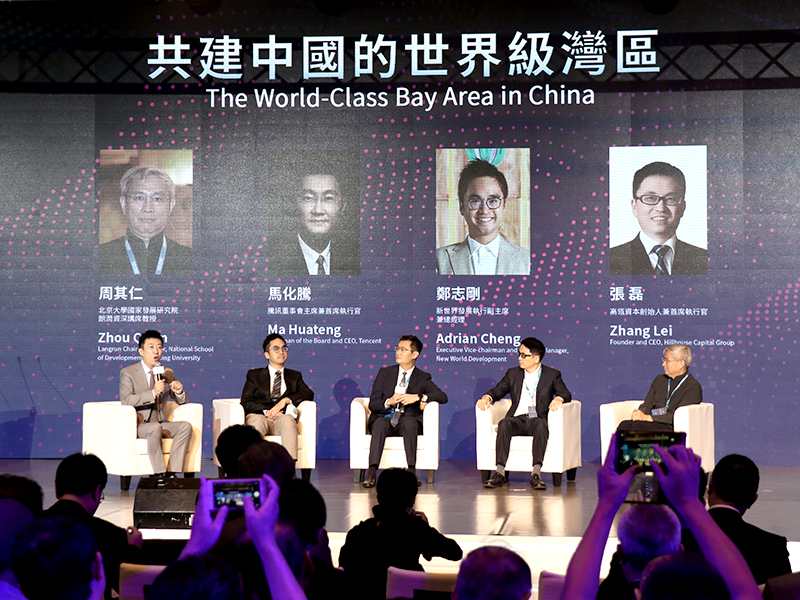 Theme: Innovation-Driven Bay Area of China
Theme: Innovation-Driven Bay Area of China
2017 marks the 20th anniversary of Hong Kong’s return to China and the development plan for the Guangdong-Hong Kong-Macao Greater Bay Area, which will become a strategic “pivot” for the opening-up to the outside world and the “Belt and Road” initiative, was included into this year's Government Work Report. Holding discussions on scientific and technological innovation, talent flow and institutional integration, the forum is aimed at offering policy recommendations on the development plan for the city cluster.
Date: June 20, 2017
Host: CDI, One Country Two Systems Research Institute (OCTSRI)
Organizer: Tencent
Programme
10:00-10:25 Opening Remarks
YUAN Baocheng, Vice Governor, the People's Government of Guangdong Province
Paul CHAN Mo-po, GBS, MB, JP, Financial Secretary, Government of Hong Kong Special Administrative Region of the People's Republic of China
LEONG Vai Tac, Secretary for Economy and Finance, Government of Macao Special Administrative Region of the People's Republic of China
10:25-10:45 Keynote Speech One
MA Huateng, Chairman of the Board and CEO, Tencent
10:45-11:05 Keynote Speech Two
ZHOU Qiren, LangRun Chair Professor, National School of Development at Peking University
11:05-11:25 Report Release: Innovation-Driven Development and Urban Transformation: Builidng a World-Class Bay Area in China
FAN Gang, President, China Development Institute (CDI)
11:25-12:25 Plenary Session One: Building China’s World-Class Bay Area
Moderator: CHEN Weihong, Anchor, CCTV Business Channel
Panelists:
MA Huateng, Chairman of the Board and CEO, Tencent
ZHANG Lei, Founder and CEO, Hillhouse Capital Group
Adrian CHENG, Executive Vice-chairman and General Manager, New World Development
ZHOU Qiren, LangRun Chair Porfessor, National School of Development at Peking University
12:25-13:55 Luncheon
14:00-14:20 Keynote Speech Three
LI Zexiang, Professor, Dept. of Electronic & Computer Engineering, HKUST;
14:20-15:05 Plenary Session Two: Bay Area Vision
Moderator: CHEN Weihong, Anchor, CCTV Business Channel
Panelists:
Fanny VONG, President, Institute for Tourism Studies
Yasuyo YAMAZAKI, President, Sun-Based Economy Association
David WALLERSTEIN, Chief Exploration Officer, Senior Executive Vice President, Tencent
Sean RANDOLPH, Senior Director, Bay Area Council Economic Institute
15:05-15:20 Project Launch: Tencent Youth Camp
15:20-16:05 Talent Engine
Moderator: XU Chenggang, Professor of Economics, Cheung Kong Graduate School of Business
Panelists:
CHEN Guanghan, Chief Expert, Institute of Guangdong, Hong Kong and Macao Development Studies, Sun Yat-sen University
HAI Wen, Dean, HSBC Business School, Peking University
Otto Chui Chau LIN, Senior Advisor to the President, Hong Kong Polytechnic University,
Lawrence J. LAU, Ralph and Claire Landau Professor of Economics, The Chinese University of Hong Kong
16:05-16:50 Plenary Session Four: Innovation Hub
Moderator: Tony CHAN, president, Hong Kong University of Science and Technology
Panelists:
DONG Mingzhu, Chairman & President, Gree Electric Appliances, Inc. of Zhuhai
Peter LEE Ka Kit, GBS, JP, Vice Chairman of Henderson Land Group
Pang Chuan, Vice President of Macau University of Science and Technology
MA Huateng, Chairman of the Board and CEO, Tencent
WONG Wai, Chairman, SF Holdings Incorporated Company
16:50-17:00 Closing Remarks
CHEUNG Chi-kong, BBS, JP, President, One Country Two System Research Institute
Highlights
“The Guangdong-Hong Kong-Macao Greater Bay Area is facing two major transformations; the transition from individual cities to a city cluster and the transition from the original manufacturing center, financial center and service center to a scientific innovation center.”
The development of the Guangdong-Hong Kong-Macao Greater Bay Area requires the cities to pursue fair benefits for all parties with no distinguishing distribution. Therefore, the coordination by higher-level institutions is the prerequisite. Having a sound industrial chain distinguishes China’s Greater Bay Area from other bay areas in the world. Thus, the producing process can be made inside the Bay Area to reduce manufacturing costs.
FAN Gang, President, China Development Institute (CDI)
“The prerequisite of innovation elements, like talents, should be sought from all over the world.”
The Guangdong-Hong Kong-Macao Greater Bay Area needs to absorb world-class resources and integrate with key elements of development. Successful businesses draw on the advantages of various places. For example, DJI was a scientific research project in Hong Kong, but it started up in Shenzhen and finally produced UAVs in the Pearl River Delta. It is now a world-class company with 90 percent of the global market share.
ZHOU Qiren, LangRun Chair Porfessor, National School of Development at Peking University
“The Greater Bay Area has led unprecedented opportunities for development. Policies should facilitate scientific and technological progress, create innovative environment and establish coordination mechanism.”
Hong Kong is highly internationalized, which can attract scientific and technological enterprises. The Guangdong-Hong Kong Macao Greater Bay Area should build an innovation eco-system featuring integration of enterprises, universities and research. For example, Stanford not only cultivates talents, it also can retains them for the development of the Silicon Valley. The governments of Guangdong, Hong Kong and Macao should establish a smooth coordination mechanism, working together to seek talents and markets from the world.
MA Huateng, Chairman of the Board and CEO, Tencent
“The flexible mechanism of Hong Kong can facilitate the establishment of private universities, so that “Hong Kong-Shenzhen-Dongguan” could become China’s Silicon Valley.”
Hong Kong has a lot of achievements in scientific research. In order to commercialize the scientific research, Hong Kong should use its flexible mechanism to establish private universities in the Hetao area, a science and technology zone jointly developed by Hong Kong and Shenzhen. Hong Kong should also bring new technologies into the city cluster of Hong Kong, Shenzhen and Dongguan, therefore, develops China’s own Silicon Valley with sound manufacturing systems.
LI Zexiang, Professor, Dept. of Electronic & Computer Engineering, HKUST
“Silicon Valley is self-motivated and self-driven.”
The entrepreneurs will turn into venture capitalists and more talents will be attracted with the venture capital. In this way, Silicon Valley is self-motivated and self-driven. For example, universities like Stanford are not just academic institutions and they also actively encourage students to start their own businesses. Some big companies will cultivate many talents, and encourage them to create new small companies. Talent is the key element of innovation. About 45 percent of Silicon Valley's entrepreneurs come from abroad. If you can bring innovative ideas, Silicon Valley will open the door for you and provide the resources you need. Free flow of ideas is a prerequisite for innovation.
Sean RANDOLPH, Senior Director, Bay Area Council Economic Institute
“The Guangdong-Hong Kong-Macao Greater Bay Area enjoys an advantage in manufacturing. Now we are in era of artificial intelligence, which is an opportunity for the city cluster.”
The Guangdong-Hong Kong-Macao Greater Bay Area has a solid foundation for manufacturing which is different from the Silicon Valley. Now that we are about to step into the era of artificial intelligence, the city cluster becomes very competitive because it can connect software, hardware and services. For companies in the Bay Area, especially small and medium-sized ones, they are exposed to the latest technology which can change the world and seek investment from Hong Kong.
David WALLERSTEIN, Chief Exploration Officer, Senior Executive Vice President, Tencent
Gallery
https://en.cdi.org.cn/component/k2/itemlist/category/76-2017-events#sigProIdebfa1b0638
Information
 The annual meeting is intended to explore the way to update management procedures, regulations, concentrate and deploy resources efficiently with new economic engine introduced in place of the old one, as China’s economy is transitioning to a new normal. It is also serves as a dialogical platform for Chinese enterprises and the academia to seek policy proposals for the reference of policymakers.
The annual meeting is intended to explore the way to update management procedures, regulations, concentrate and deploy resources efficiently with new economic engine introduced in place of the old one, as China’s economy is transitioning to a new normal. It is also serves as a dialogical platform for Chinese enterprises and the academia to seek policy proposals for the reference of policymakers.
China Soft Science Prize is an award introduced and funded by SSSDF in 2010. Since 2015 the prize is assessed biennially. In order to ensure its independence, authority and inclusiveness, SSSDF assesses social science studies in a scientific, simple, practicable and impartial manner.
Date: June 20, 2017
Venue: Room 103, First Floor, China Hall of Science and Technology
Host: CDI, Shenzhen Soft Science Development Foundation (SSSDF)
Theme: New Economy and Old System
Program
Beijing Annual Meeting 2017
08:40-09:10 Registration
09:10-09:20 Opening Remarks
Fan Gang, President, CDI
Moderator: Guo Wanda, Executive Vice President, CDI
09:20-09:40 CDI Report on New Economy and Old System
Ruan Meng, Director, Public Economy Research Department, CDI
09:40-10:55 Session One: New Supervision Concept and New Economy Development
Moderator: Guo Wanda, Executive Vice President, CDI
Panelists:
Zhang Bei, Vice President, Didi Chuxing
Liu Muyun, President, Beike Biotechnology
Zheng Zhibin, Vice President, Huawei
Dong Jiayun, CEO, Fairpur
10:55-11:10 Coffee Break
11:10-12:25 Session Two: Inclusive Mechanism Innovation and Engine Transition
Moderator: Cao Yuanzheng, Chief Economist, BOC International Holdings Limited
Panelists:
Lv Wei, Director, Research Department of Innovation Development, The Development Research Center of the State Council (DRC)
Xue Zhaofeng, Professor, National School of Development, Peking University
Zhang Zhanbin, Director, Economic Research Department, Chinese Academy of Governance
Wu Jinxi, Associate Professor, Institute of Science, Technology & Society, Tsinghua University
12:25-12:35 Press Conference: Rethinking China’s Urbanization and Metropolis
Fan Gang, President, CDI
12:35-12:40 Closing Remarks
Guo Wanda, Executive Vice President, CDI
12:40-13:40 Lunch
The 6th China Soft Science Prize Award Ceremony
14:00-14:30 Registration
14:30-14:40 Video: 10th Anniversary of Shenzhen Soft Science Development Foundation
Moderator: Li Jinkui, Senior Research Fellow, CDI
14:40-14:50 Opening Remarks
Xu Yongfa, Chairman, Shenzhen Soft Science Development Foundation
14:50-15:00 Introduction of Award Rules
Fan Gang, President, CDI
15:00-15:35 Award Ceremony of the 6th China Soft Science Prize
15:35-15:40 Group Photo
15:40-17:05 Award Reports
17:05-17:30 Interaction
Highlights
Here are excerpts from the Beijing Annual Meeting 2017.
“More institutional reforms and prudent regulations are needed in future”.
A new economy is featured with unprecedented fast reform and trans-boundary convergence. Backward and inflexible old institutions stand in the way of the new economy. There are a lot of constrictions that obstruct the development of the new economy and limit the free flow and efficient deployment of factors, clashing with established interest groups, institutional failures, outdated regulations, fragmented management and non-integrated resources. Firstly, it’s very important for policymakers to maximize consumer interests. Secondly, regulations should be reformed to accelerate the development of the new economy. Finally, various regulatory authorities should coordinate efforts.
Ruan Meng, Director, Public Economy Research Department, CDI
“Policymakers are responsible for security and environmental protection.”
E-hailing is different from the traditional taxi industry. The rates of E-hailing reflect demand while its service quality reflects profit. However, the principle of “survival of the fittest” is ineffective within an outdated regulatory framework. Policymakers should promote marketplace fairness, thereby, eliminate restrictive institutions and decentralize power.
Zhang Bei, Vice President, Didi Chuxing
“We see the rapid development of technology, increasing clinical needs and improving healthcare awareness. Are regulations and policies an impetus or an obstruction? ”
The healthcare industry in China is in a dilemma. Excessive regulations stifle market flexibility, while inadequate regulations aggravate the chaos. To improve the healthcare industry, policymakers should adjust regulations to support new technology, meanwhile, supervise the drug quality and ensure the security. The industry needs safeguards instead of restrictions for technological advances.
Liu Muyun, President, Beike Biotechnology
“Management and institutional defects in government procurement lies in overemphasis on process and underemphasis on consequence.”
The government should marketize procurement procedures. For example, procurement information can be more transparent including databases and data sources. Unified qualification procedures can be issued, thereby, enable users to reach bidder information and learn industry standards.
Dong Jiayun, CEO, Fairpur
Dong Jiayun: CEO of Shenzhen Qianhai Internet Tech Holdings
“Marketization is not a panacea as it fails sometimes.”
Policymakers should take advantage of the market mechanism to channel good resources into corporate innovation. Industry policy can play an incentive role if it can generate driving forces. It is not true that there are no industry polices in the U.S. and Japan, by contrast, the scientific and technological innovation have well supported by lots of relevant policies.
Lv Wei, Director, Research Department of Innovation Development, The Development Research Center of the State Council (DRC)
“It’s important that the stakeholders share regulatory responsibilities based on their capability and involvement. It’s not fair to blame on the disadvantaged.”
The rationales, stakeholders and objectives of the original regulatory mechanism are falling apart. The stakeholders should take the responsibilities in the public affairs. Therefore, the e-hailing platform should take more responsibilities in terms of security, rates and routes.
Xue Zhaofeng, Professor, National School of Development, Peking University
“Leave the new institutions alone. Don’t call it a stop at will.”
Flexible regulations must have a bottom line. Policymakers must give a free hand to the market and legalize some universal market practices. Business associations also play an important role in third-party assessment. Policymakers can adopt technical innovations to join up information islands.
Zhang Zhanbin, Director, Economic Research Department, Chinese Academy of Governance
“When research institutes are commercialized, their business has turned to short-term profit-making projects. Fewer fundamental technologies are available to be shared.”
Since the reform and opening-up in 1978, countless science parks, development zones and industrial parks have sprung up across China. However, most of these entities are not capable of in-depth scientific research and fail to commercialize the technology. When it comes to fundamental technology, both the market and the government have their weaknesses. There has to be an institution between these two, in this case, industry technology institutes could be an indispensable solution.
Wu Jinxi, Associate Professor, Institute of Science, Technology & Society, Tsinghua University
“Sow the seeds and leave them alone.”
The developing countries have more stable markets and more clearly-defined industrial plans. To maintain an effective and feasible policy, they only need to follow the pace of the developed countries. Because of its randomness and unpredictability, technological breakthroughs make industry policy largely ineffective. We can only improve the system which can breed innovation.
Cao Yuanzheng, Chief Economist, BOC International Holdings Limited
Winners of the 6th China Soft Science Prize
- Report on Extreme Volatility in Chinese A-share Stock Market
Wu Xiaoling, Deputy director, the Financial and Economic Affairs Committee of the National People's Congress
- Do You Want a Second-Child
Gu Baochuang Professor, Population Development Studies Center, Renmin University of China
- Establishment of the Rule of Law in China based on the thinking of International Rule of Law and Annual Report on China's Practice in Promoting the International Rule of Law (2015)
Zeng Lingliang, Former Senior Professor, Humanities and Social Sciences, Wuhan University
Winner of Policy Research of the 6th China Soft Science Prize
- Environmental Tax in China: A Study of the Policy Design and Effects
Wang Jinnan, Ge Chazhong, Long Feng, Qin Changbo and Gao Shuting, Researchers, The Chinese Academy for Environmental Planning
Winner of Development Research of the 6th China Soft Science Prize
- Development Sustainability Index Report of China Fortune 100 Industrial Park
Ren Hao, Zhen Jie, Ye Jiangfeng, Zhong Dongting, Zhu Guohua, etc., Tongji University Development Institute
Winner of Social Research of the 6th China Soft Science Prize
- WeChat: The ‘Being-in-the-world’ thoughts of Chinese Netizens
Sun Wei, Associate Professor, Fudan Journalism School
Winner of Management Research of the 6th China Soft Science Prize
- The Strategy of Integrating Employee’s Goals: Case Study of Haier’s Autonomous Management
Zhang Kai, Li Pengbo, Luo Wenhao, Zhang Qinghong, Cao Yangfeng, etc., Renmin University of China
Gallery
https://en.cdi.org.cn/component/k2/itemlist/category/76-2017-events#sigProId30c181777c
Information

CDI International Report, themed on “US Trade Policies under the Trump Administration”, gathered experts and scholars to have an intense discussion on the current US trade policy and its possible influence on the Sino-US relationship.
Date: April 10, 2017
Venue: Room 101, CDI Mansion, Shenzhen
Host: CDI
Theme: US Trade Policies under the Trump Administration
Program
15:00-15:05 Opening Remarks
15:05-16:05 Dialogue: US Trade Policies under the Trump Administration
Moderator: GUO Wanda, Executive Vice President, CDI
Speaker: Stephen OLSON, Research Fellow, Hinrich Foundation
Commentator: LIU Xianfa, Senior Research Fellow, CDI
16:05-16:55 Q&A
16:55-17:00 Closing Remarks
Highlights
The best quotes from the forum are as follows:
“America would intend to prefer bilateral agreement instead of multilateral agreement or regional agreement, for this would add more advantage for America and avoid lowest common denominator.”
The U.S. would make trade policy on the basis of its own interests, with goals of increasing growth rate, decreasing trade deficit, strengthening manufacturing base, cracking down on dumping, etc.
The main members of Trump’s current trade group include Willbur Ross, U.S. Secretary of Commerce, Gary Cohn, chief economic advisor to President Donald Trump and Director of the National Economic Council, etc. Most of them hold negative attitude toward China.
During Donald Trump’s presidency, a series of trade policies were made such as tighter enforcement in collecting AD/CVD tariffs and comprehensive review of US trade deficits. These policies would exert some influence on the trade relationship between China and the U.S.
As for Trump’s idea of revitalize America’s manufacturing industry by withdrawing America’s manufacturing lines from China, Mr. Stephen pointed out that it is absolutely unrealistic, for it is the technology evolution and automation that lead to the current situation of America’s manufacturing industry, not trade relationships with other countries. One of the reports from Goldman Sachs mentioned that, it is relative high labor cost and fewer labors that restrained the development of manufacturing in the US.
Stephen OLSON, Research Fellow, Hinrich Foundation
“China would never be interfered by America’s trade policy and would carry out its own policies on industrial restructuring, finance as well as state-owned enterprises independently.”
According to the rules of international trade, if the production line of Apple be moved back to its homeland, US would definitely hurt itself. However, if Trump insists to carry out this policy with blue collar’s support, the trade environment would be quite complicated.
Although the trade relationship between China and US confronts many challenges, we still have confidence in the future.
LIU Xianfa, Senior Research Fellow, CDI
Gallery
https://en.cdi.org.cn/component/k2/itemlist/category/76-2017-events#sigProId2c724f0133


